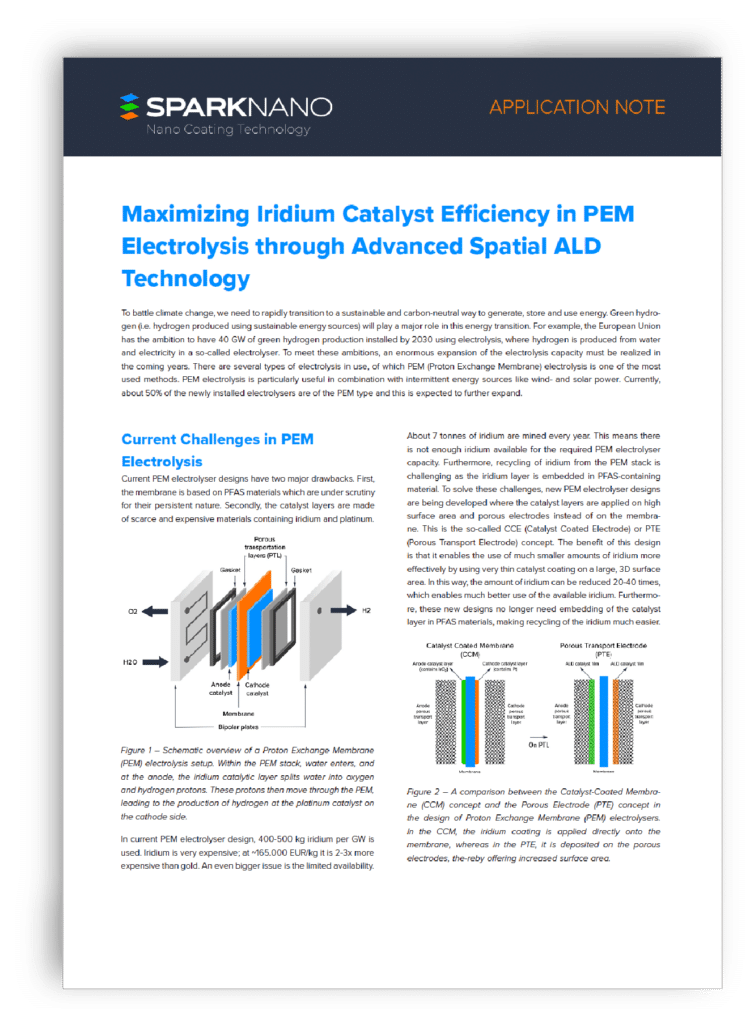In the pursuit of advancing proton exchange membrane (PEM) electrolysis for green hydrogen production, the challenges posed by current designs necessitate innovative solutions. The conventional use of PFAS materials in the membrane and the reliance on scarce and costly catalyst materials, such as iridium and platinum, present formidable hurdles. However, the critical shift towards the CCE or PTE concept offers a promising trajectory. This design innovation, focusing on high-surface-area and porous electrodes rather than membrane embedding. The success of these novel PEM electrolyser designs hinges on precise control over catalyst material deposition.
Spatial Atomic Layer Deposition (Spatial ALD) emerges as a pivotal player, providing a refined approach to catalyst application. Through the adept manipulation of ALD cycles and penetration depth, Spatial ALD achieves unparalleled conformality, as demonstrated in our application example. The showcased results, validated through SEM (EDS) data on the ThermoScientific Pharos G2 Desktop SEM, substantiates the transformative impact of Spatial ALD in maximizing iridium catalyst performance for PEM electrolysers.

